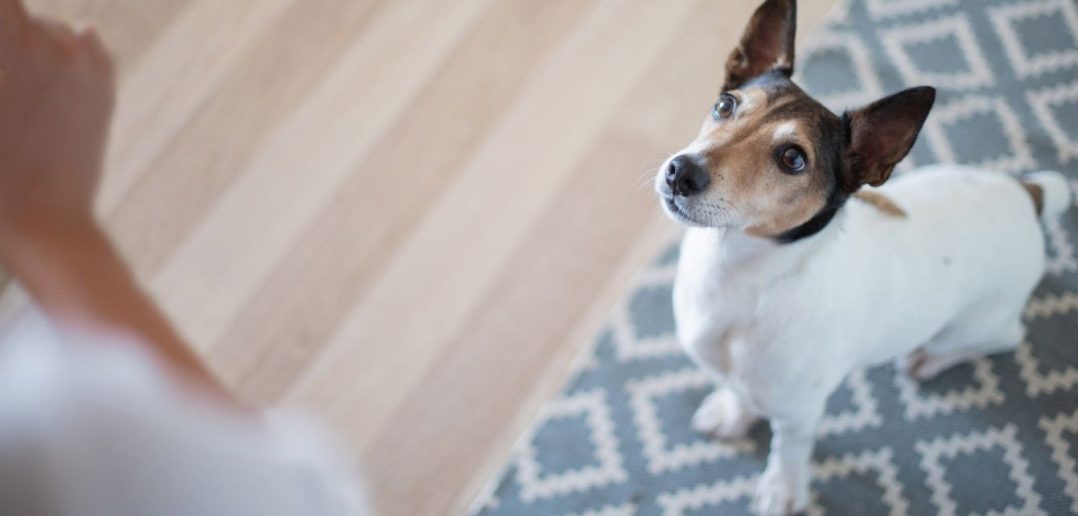After choosing the perfect crate size for your dog, your next goal is to help your pup adapt to their new den. A variety of instances, like a trip to the vet or boarding at an emergency shelter, require crating your dog. It’s much better for your canine companion to already be familiar with a crate before such a necessity arises, which is why it’s important to introduce the crate as a calm retreat and not a doghouse sentence. Keep reading to learn four efficient ways to crate train your dog and, if you use positive reinforcement, they’ll soon adapt to being confined for longer periods of time.
1. Gradual Introduction
Begin with a mindful introduction! Introduce your dog to the crate by presenting it in a comfortable setting and encourage them to enter with a happy tone of voice. Place the crate in the family room, or any room they regularly lounge in, and leave it open for them to explore at their discretion.
Be sure to secure the door to avoid it accidentally closing or touching your pet during their exploration. If your pet appears hesitant to explore the crate, continue encouraging them by dropping treats or familiar items inside of the crate to welcome an introduction and exploration without any sense of urgency.
2. Positive Association
After introducing your dog to the crate, the next goal is to continue positive reinforcement to help your dog associate the crate with the rest of your home. The most effective way to condition this positive reinforcement is through meals. Place your dog’s food dish by or inside the crate to help them feel safe enough to enter. Begin this process by dropping their treats by the crate until they’re comfortable reaching their food dish. Consider placing their favorite blanket or chew toy inside to help them associate the crate with being home.
3. Extended Periods
In the beginning stages of your dog entering the crate, it’s important to leave the door open to slowly adapt them to the idea that it’s their safe space. Use positive reinforcement to guide your dog into their crate, and then practice closing the crate door for short intervals. Begin leaving them in their crate for 10 minutes and increase it to 30 minutes.
If you’re crating your dog overnight, you can start with placing their crate near your bedroom and then relocating the crate once your pet is comfortable sleeping in it. If your dog begins to show signs of distress, it’s important to allow them to leave the crate to prevent negative association. It’s also important to reward your pet with treats and praise each time they enter the crate.
4. Regular Routine
Once your dog appears comfortable inside their crate, you can begin to test leaving them in the crate for longer intervals. Associate the word “crate” with something positive so that your dog will anticipate entering it. There are even really awesome crate training toys like this one and this one that helps reduce anxiety and give your dog something to concentrate on. It’s best to also crate your dog for short intervals when you are home to avoid your companion associating it with being left alone.
An effective way to ease your dog into a crate routine is arranging a “getting ready” step for them to understand you’re preparing to leave. It’s recommended to limit crating your dog from 5 to 20 minutes before you leave. It’s best to set up a reward system for your dog to understand a positive correlation between entering their crate and receiving their treat as a reward.
The timeline for successful crate training can vary from weeks to months, but don’t become discouraged if your dog takes a while to warm up. After establishing a routine, you’ll discover the benefits of crate training your furry companion as a management tool for you while providing an additional place of security for them.
Establishing a routine for your dog with their crate is also providing you with a tool to curb destructive behavior and additional safety for your furry friend. The process of crate training your dog isn’t always easy and if things aren’t perfect, just ensure they have a positive association with the crate. It definitely makes life easier (for both of you).




